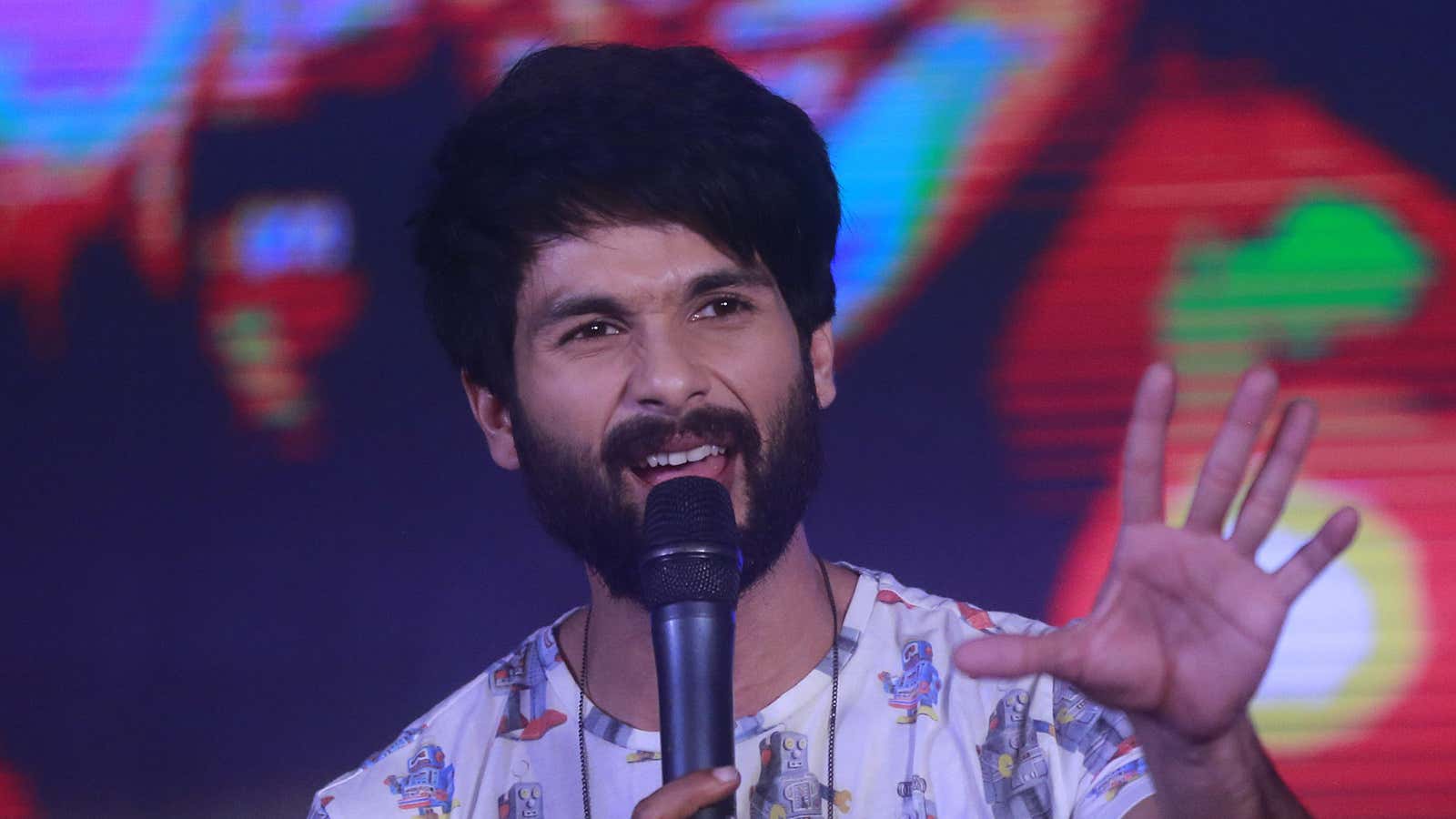At the outset, let’s be honest about one thing: This backlash against the Bollywood movie Kabir Singh isn’t any coming of age of Indian audiences. It’s not like they won’t accept an aggressive man-child treating women like chattel anymore. It merely shows that Bollywood aficionados won’t accept such toxic characters without the comforting rose-tinted lenses.
The 1990s and early 2000s loved obsessive men, epitomising “love” in movies like the Shahrukh Khan-starrers Darr (1993) and Anjaam (1994), and Salman Khan’s Tere Naam (2003). As recently as 2013, Dhanush was seen stalking Sonam Kapoor for years on end in Raanjhaana. Yet, the audience made peace with these characters because they met politically-correct ends: getting killed or, like in Tere Naam, being relegated to a mental asylum.
But we love happier endings, don’t we?
Over time, movie-makers thus began feeding us the softer, romanticised stalker trope—and we didn’t even register it as problematic. Think Rehna Hai Tere Dil Mein (2001), for instance.
More recently, in Toilet-Ek Prem Katha (2017), Akshay Kumar photographed a girl without her consent. Director Shashank Khaitan has been especially guilty of blurring these lines, too. His Badrinath Ki Dulhania (2017) hero, Varun Dhawan, incessantly pursues Alia Bhatt despite her protests. In his 2018 release, Dhadak, Ishaan Khatter—a true blue Hindi film hero devoid of grey shades explicit in Kabir Singh—slaps his love interest Janhavi Kapoor.
This is not to say Kabir Singh is not misogynistic. Played by Shahid Kapoor, the lead character is transparent about his anger-management, or the lack of it. There are distasteful scenes where he asks his love interest to befriend a “healthy” chick or tells her “chunni theek karo” (“fix your scarf”).
Do these establish how immature and brash Kabir is early on? Possibly yes. Otherwise he would’ve veered closer to our celebrated Dharma Productions and Yashraj Films heroes. If there’s one thing Kabir Singh is not meant to be, it’s likeable.
“Watching a film like Kabir Singh will help you understand that when you allow yourself to be affected by anger and negative emotions, it can take you on the path of destruction,” Kapoor has said. “The film warns you against going down that route.”
As for those likeable stalkers, disguising toxic masculinity with song and dance, complemented by a Manish Malhotra wardrobe, those are the ones we need to worry about.
No heroes here
Why Kabir and Preeti’s love saga rattles a section of viewers is that it shows the dark, destructive side of the ’90s stalker-hero—topped by a new-age happy ending. And the audience is clearly lapping it up.
For many, the protagonist’s redemption was too much, too soon. Then again, there are real people whose relationships do survive, however messed up they might be. In his nuanced discussion of Kabir Singh and its original in Telugu, Arjun Reddy, critic Baradwaj Rangan says, “I decided both of them are equal nut-cases and both of them deserve each other.”
If we’re truly for gender equality, then it’s wrong of Kabir to slap Preeti—and of Preeti to slap him. In another recent blockbuster, Zoya Akhtar’s Gully Boy, when Alia Bhatt’s character breaks a bottle on a girl’s head for talking to her boyfriend, we labelled her spunky. How’s that different from Kabir’s possessiveness?
Of course, some will argue Kabir is aspirational still. He’s a brilliant student and a star football player. But for most of the film, he’s also an alcoholic and drug addict who spirals. It’s a matter of perspective.
No country for Kabir Singh
Simply speaking, Kabir Singh doesn’t deserve the extra flak its drawn. But with the lines between fiction and reality blurring in the audiences’ minds, its biggest flaw is having arrived in the wrong decade and a year after India’s #MeToo meltdown. People are still angry about many big Bollywood names going scot-free and the conversation dying down.
Add to that a fledgling sensitive environment that is being nurtured in the Hindi film industry. Concerted efforts are being made to give greater visibility to female writers, directors, and characters, and to do away with the male gaze.
Amid this tentative evolution, Kabir Singh, telling the story of a man from his perspective with the female lead being absent for most of the second half, comes across as a movie of a time past.
We welcome your comments at [email protected].
